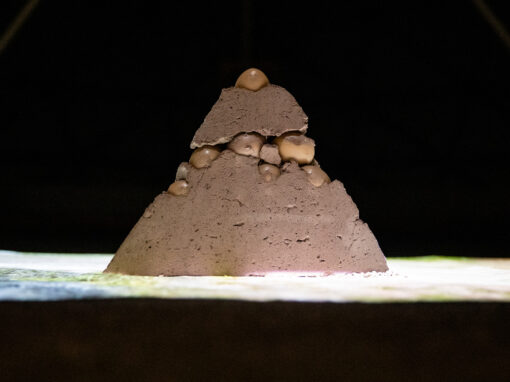
Cemitério Verde Green Cemetery
2023, Jardim agroflorestal, curta-metragem experimental, 25 min, vídeo digital Agroforestry garden, short film, experimental, 25min, digital video
Cemitério Verde foi gestado nos primeiros meses da pandemia de COVID-19, entre o solo do quintal e ambientes virtuais – a residência Alterando Paisagens e tutorias na SAIC.
Na intimidade e restrições do confinamento, o filme foi co-criado em ambiente doméstico compartilhado com minha mãe Lavina, meu namorado Ricardo, meus gatos Ubu e Bume, todo tipo de seres, fantasmas e meu parceiro sonoro Ramiro Galas.
Green Cemetery is a syntropic garden and a short film that originated when my mother and I relocated to Alto Paraíso de Goiás, situated in the heart of the biodiverse Cerrado biome, known for its rich savannas. Despite its ecological significance, the Cerrado faces severe challenges due to the impact of agribusiness. Aware of the vast expanse of soybean fields surrounding us, my mother and I embarked on the transformation of our small degraded plot into a thriving agroforestry system. Concurrently, we collaborated on the creation of a film inspired by our experiences of living in this environment. The garden we cultivated attracts birds and pollinators, serving as both a refuge and a source of food for a diverse range of beings. At its center stands a multi-story vertical monument, which serves as both a fountain and a memorial. This memorial is adorned with portraits of relatives, which gradually decompose over time with the growth of mycelia. The film tells the story of Lavina, who retires and fulfills her dream of purchasing her own home. In the face of weathered soil where not even grass could grow, Lavina embarks on the planting of an agroforestry garden, offering each seedling and seed as a tribute to a loved one.
Green Cemetery was conceived during the initial months of the COVID-19 pandemic, blending the physicality of backyard soil with the virtual realms of the Changing Landscapes residency and SAIC advisors.
This film emerged within the intimate and restricted confines of our domestic environment, shared with my mother, Lavina, my boyfriend, Ricardo, my cats, Ubu and Bume, specters, an array of other beings, and my sound collaborator Ramiro Galas.




Maurício Chades é um artista e cineasta originário de Gilbués-PI. Vive e trabalha entre o Distrito Federal, Alto Paraíso de Goiás e os Estados Unidos. Bacharel em Audiovisual e Mestre em Arte e Tecnologia pela Universidade de Brasília e Master in Fine Arts pela School of the Art Institute of Chicago. Em Brasília, participou dos coletivos Espaço AVI, Kinofogo Cineclube e NINHO – Coletivo de Pesquisa em Arte, Interatividade e Agroecologia. Seu trabalho, entre filme, instalação, escultura e performance, especula sobre futuros simbióticos, queer e anticoloniais. Criando ambientes sintrópicos e tecendo alianças multi-espécie, sua prática artística combina contação de história com agricultura restaurativa, compostagem e fungicultura. Seus trabalhos foram exibidos em festivais de cinema e exposições nacionais e internacionais, como a Mostra de Cinema de Tiradentes, Olhar de Cinema, Queer Lisboa e FILE – Festival Internacional de Linguagem Eletrônica. Em 2019, sua primeira exposição individual, Pirâmide, Urubu, estreou na Torre de TV Digital de Brasília, projeto premiado com o Frankenthaler Climate Art Awards em 2022. Em 2023 participou da Bienal Videobrasil com Cemitério Verde, filme premiado em primeiro lugar no e-Flux Film Award.
Maurício Chades is an artist and filmmaker from Brazil. His works, in film, installation, sculpture, and performance, speculate about anticolonial symbiotic futures and queer ecologies. Envisioning syntropic environments and multispecies alliances, his art practice combines storytelling with restorative agriculture, composting, and fungiculture. He holds a BA in Cinema Studies, an MA in Art and Technology from the University of Brasilia, and an MFA from the School of the Art Institute of Chicago. He participated in collective groups such as Espaço AVI, Kinofogo Cineclube, and NINHO - Collective for Research in Art, Interactivity, and Agroecology. His works were shown worldwide, like at Queer Lisbon, Curitiba International Film Festival, and FILE – Electronic Language International Festival. In 2019, he presented his first solo show, Pyramid, Urubu, at The Brasilia Digital TV Tower, receiving the Frankenthaler Climate Art Awards in 2022. In 2023, Chades was featured at the Biennial Sesc_Videobrasil. His most recent accomplishment was the first prize of the e-flux Film Award for Green Cemetery.


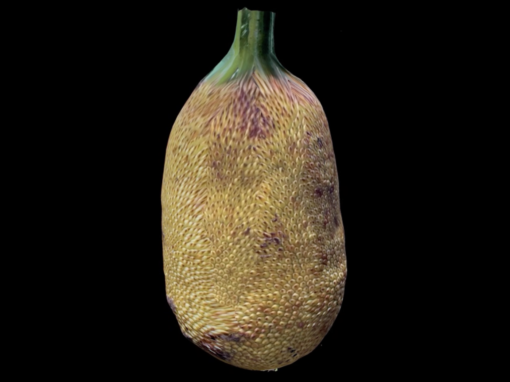
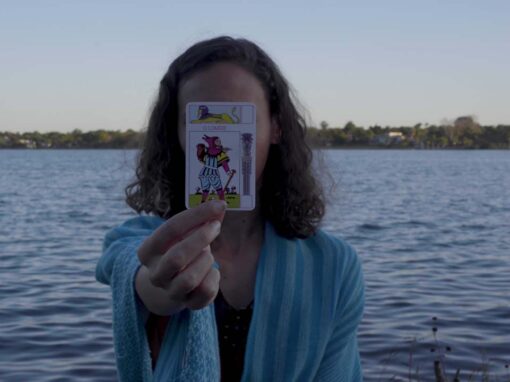

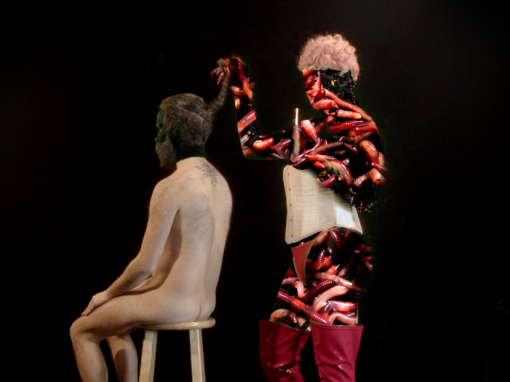
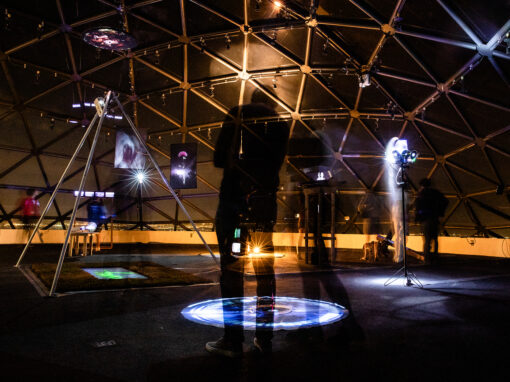
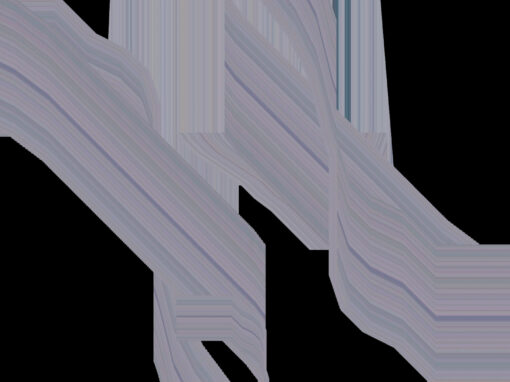

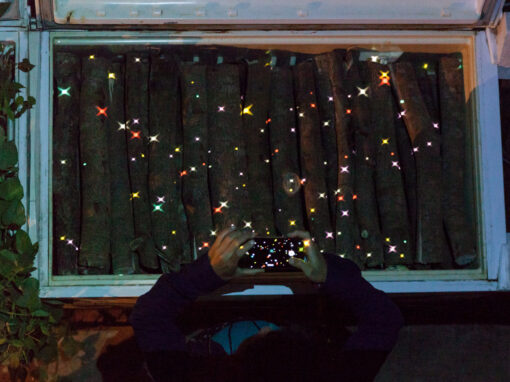
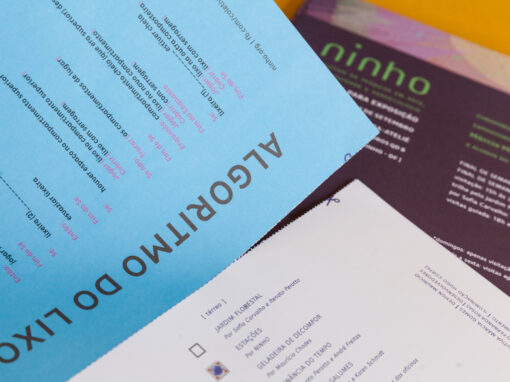
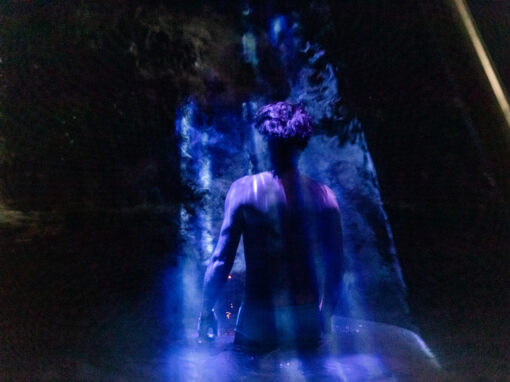
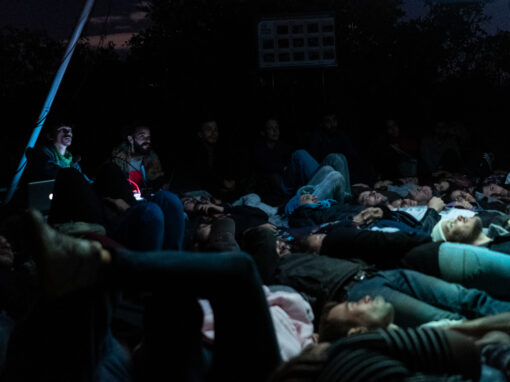
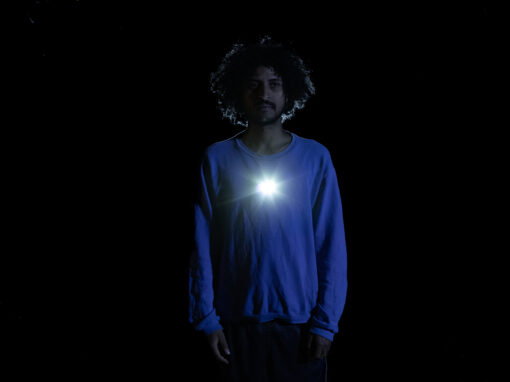

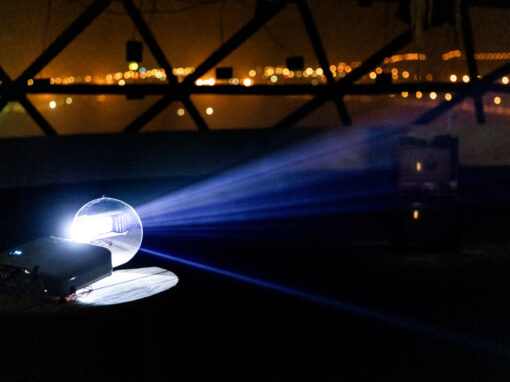
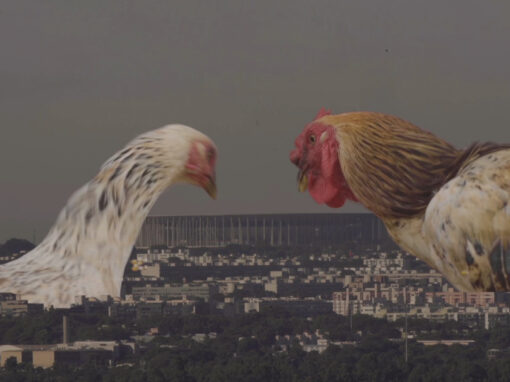

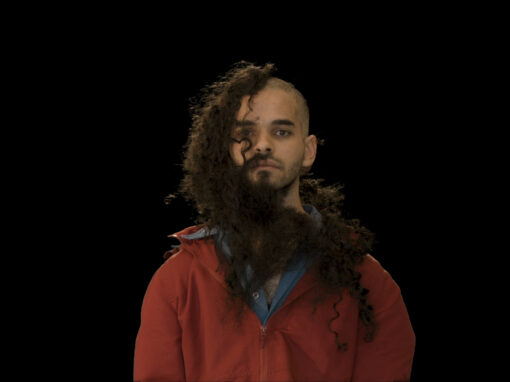
![TERRA[CAP]](https://www.mauriciochades.com/wp-content/uploads/2020/07/PirâmideUrubuJanineMoraes65-510x382.jpg)




